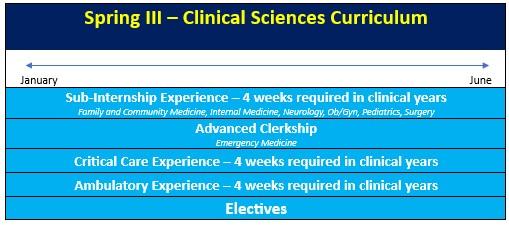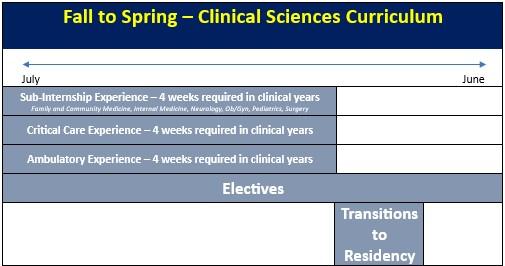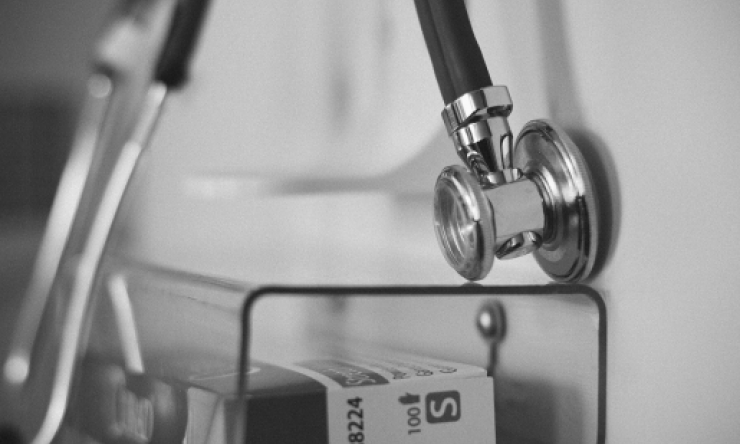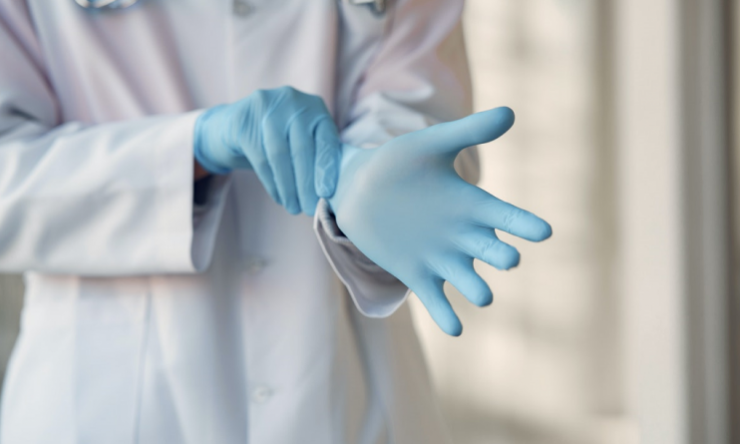For graduating class of 2027 and beyond

Training in our affiliated institutions presents you with a variety of settings and patient populations that is hard to match anywhere in the world. Exposure to a variety of clinical settings and patient populations throughout your clinical rotations will prepare you to succeed in any situation your career presents.
Core Clerkships
The clinical curriculum begins in October of your second year. This phase of your training uses patient-centered learning techniques, which include taking histories, performing physical examinations, reviewing laboratory results, and working with faculty physicians to manage patients through diagnosis and treatment.
The Clinical Years
The charts below show an example M.D. student path through the clinical curriculum.
Year 2 – Spring/Year 3 – Fall

The core clerkships are broken into six blocks, each of which is eight weeks long. Students will participate in the following rotations:
- Internal Medicine clerkship for eight weeks
- OB/GYN clerkship for six weeks and a two-week elective
- Neurology clerkship for four weeks and Psychiatry Clerkship for four weeks
- Pediatrics clerkship for six weeks and a two-week elective
- Family and Community Medicine clerkship for four weeks and a four-week elective period
- Surgery clerkship for six weeks and a two-week course on “Service Learning, Wellness, and Narrative Medicine”
Year 3 - Spring

The third-year spring term runs from January to June. During this time, students can make progress on fulfilling clinical graduation requirements. Four weeks of a sub-internship, four weeks of the Ambulatory Core Rotation, and four weeks of the Critical Care Rotation are required during the clinical years. Sub-internship opportunities include Family and Community Medicine, Internal Medicine, Neurology, Ob/Gyn, Pediatrics, Psychiatry, and Surgery. The four-week emergency medicine clerkship can also be taken during this time. Also in this term, students will take the Clinical Performance Examination (CPX). Students can also progress through fulfilling their electives requirement.
Year 4 – Fall and Spring

The fourth year of medical school runs from July to June. During this time, students can make progress on fulfilling more personalized clinical graduation requirements. Four weeks of a sub-internship experience is required during the clinical years. Sub-internship opportunities include Family and Community Medicine, Internal Medicine, Neurology, Ob/Gyn, Pediatrics, Psychiatry, and Surgery. Four weeks of the Ambulatory Core Rotation and four weeks of the Critical Care Rotation are required during the clinical years. In March, students will take the four-week long Transitions to Residency Course.
Customizing Your Education
You may tailor your clinical experience to your interests by pursuing other specialties through rotations in a sub-internship of your choosing, various specialties during the Ambulatory Care Rotation, various intensive care units during the Critical Care Rotation, and through lots of electives.
Pathways span the four years of medical school and include both classroom, clinical and/or research activities in the specific areas of interest.
Requirements
View requirements for Degree Doctor of Medicine and Core Competency Graduation Goals.
Compact
View Compact Between Teachers, Learners and Educational Staff.
Progress Notes
Progress Notes is the student magazine of Baylor College of Medicine. In it, students of the College share their stories from the clinics, their thoughts on medicine and healthcare, and stories from the frontlines of research.

Glued feet: The importance of compassion and healing in medicine
Read this third-year medical student's reflections on a patient encounter that led to the realization that simple acts of compassion can have a significant impact on a patient and a physician.

Growing pains: Clinical training during COVID-19
A third-year medical student at Baylor College of Medicine reflects on hospital training during COVID-19. Read the article.








